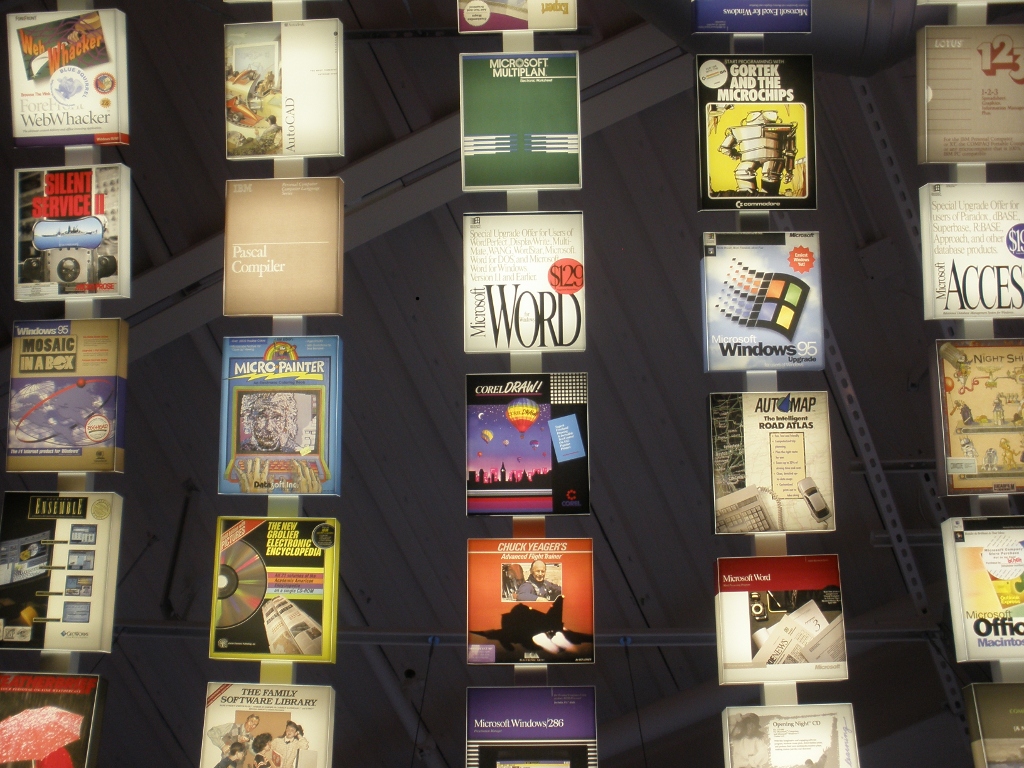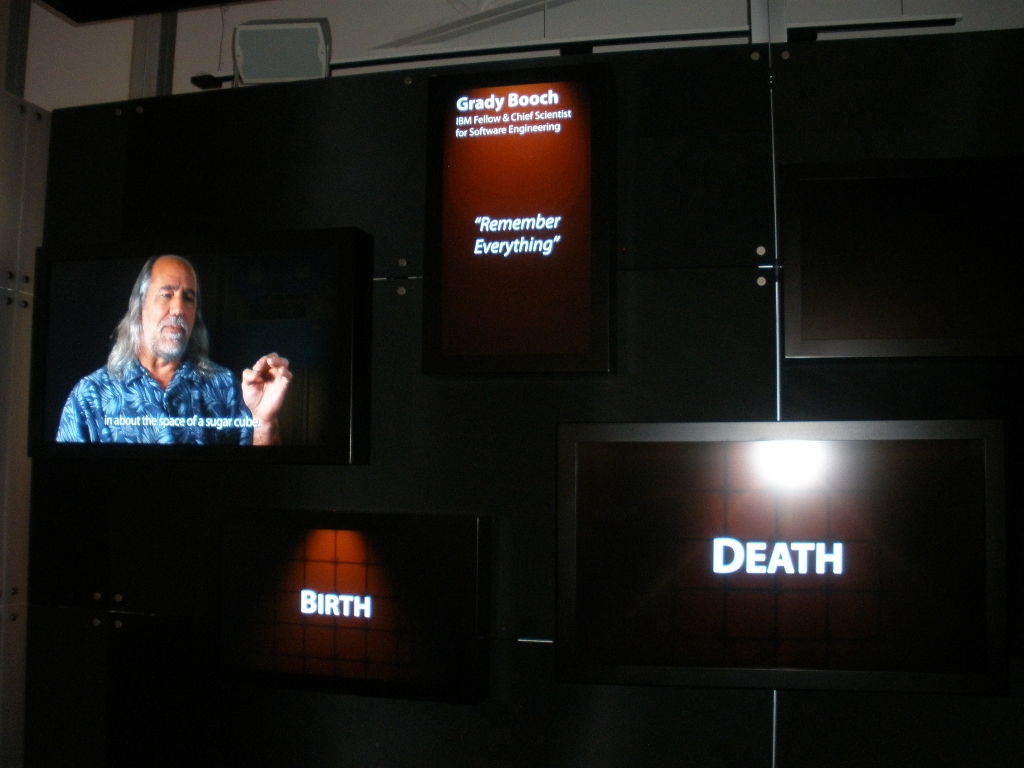Last Saturday I visited the Computer History Museum’s new exhibition “R|Evolution: The First 2000 Years of Computing”. The exhibition is fantastic, and they’ve come a long way from the early days of their “visible storage” exhibition. If you live in or visit the Silicon Valley, I highly recommend you pay it a visit.
That said, every time I visit the museum, I ask about the state of curating, preserving, and showing not only hardware, but also software. Like most exhibitions, the R|Evolution exhibition focusses on physical objects and complements them with textual explanations on plates as well as videos. Software is being discussed in the Software Theatre and in some smaller videos. However, these videos are about software and programming in general, not about actual software artifacts. Software is mostly shown through physical objects, i.e. the boxes they came in as packaged software.

This is hardly a form of presentation that brings out the beauty of software code, how software works, and how paradigms changed over time. Also, I saw no presentation of non-packaged software and open source and open data was completely missing.
The significance of software is being recognized though. At the exit of the exhibition, you’ll find a video wall with short snippets and statements of notable people, and my impression was that whenever they focussed on what computers do for us, software was at the forefront.

This brings me to the question of software preservation and show-casing. Clearly, the way it is currently being done is sub-optimal. Videos and boxes don’t really convey much of what people need to understand about software.
I looked at the CHM’s Software History site to see whether they have any progress to report but this doesn’t seem to be the case: The last report dates 2004 and the site’s footer itself says 2007. Seems this effort is stalled.
Preserving the raw data is only the obvious first step. Preservation and show-casing seem interesting topics to me. Software doesn’t mean much without context, so you’d need to collect emulators, configuration information, and usage patterns to run the software. But even running software doesn’t help much, and it certainly doesn’t speak to the average museum visitor. So you’d want visualization of program execution, configuration management history, etc. A rich topic, and I encourage everyone to ask the museum staff about the state of software preservation.
I hope that the next exhibition at the CHM will be able to unlock the beauty of the Linux Kernel’s code, Microsoft Word’s interaction design, and Apache’s httpd subversion history in front of my eyes.









Leave a Reply